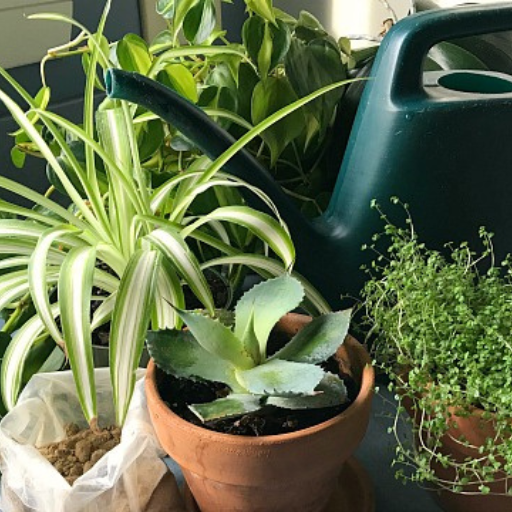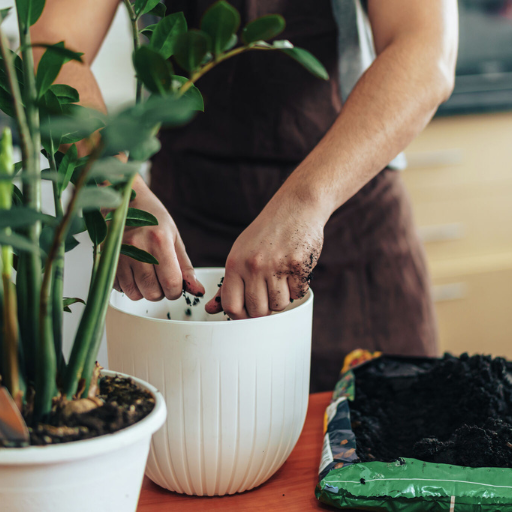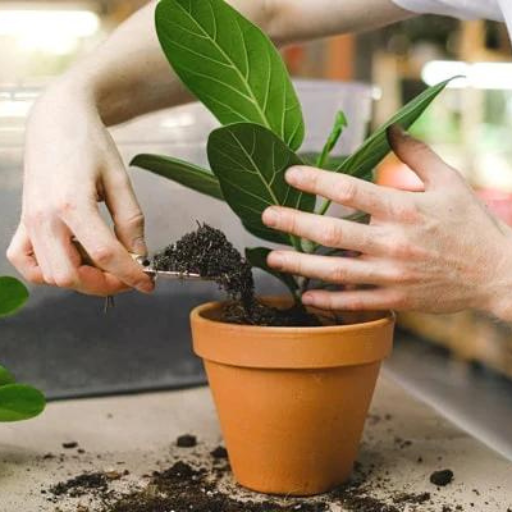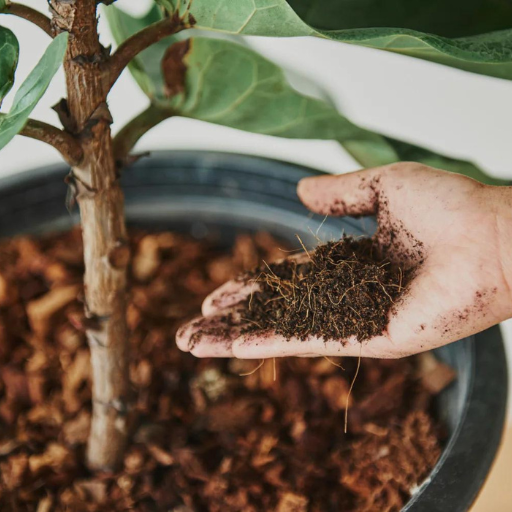Welcome to our comprehensive guide on using organic indoor plant fertilizers to maintain thriving and healthy houseplants. In this article, we aim to provide you with valuable insights into the world of natural fertilizers, explaining their benefits, types, and how they can be effectively integrated into your indoor gardening routine. Whether you’re a seasoned plant parent or just starting out with your indoor garden, this guide will equip you with the knowledge needed to nourish your plants naturally and sustainably. Read on to discover the secrets to lush, vibrant indoor foliage and learn how to give your houseplants the organic boost they deserve.
What are the Best Organic Fertilizers for Indoor Plants?

Types of Organic Fertilizers for Indoor Plants
Compost is a well-known organic fertilizer made from decomposed organic material. It is rich in essential nutrients that improve soil structure and promote healthy plant growth. Especially for indoor plants, compost tea which is liquid form of compost can be very helpful.
Worm Castings are also known as vermicompost and are byproducts of the digestion process in earthworms. This fertilizer as worm castings have been called is highly nutritious enhancing soil aeration, moisture retention and general plant well-being. This makes it ideal for potted plants as it provides nutrients over time.
Fish emulsion is a kind of juice obtained from fish by-products. It has all the important elements necessary to support plant life such as phosphorus, potassium, and nitrogen. If you want to give your indoor plants an instant boost then this highly absorbed fertilizer would be ideal. It’s best suited for leafy herbs with high nitrogen demand.
Customer Reviews on Organic Indoor Plant Fertilizers
Compost
Most gardeners like the adaptability and richness of compost in terms of nutrients. Feedback from users indicates that when compost was added to the mix there were visible changes in plant growth or foliage coloration: some even grew more rapidly than previous germination stages . Making compost from kitchen scraps at home is another advantage though it takes time and effort to establish one . A review done by reputable gardening sites reveals its well-balanced nutrient profile that contributes positively to soil health.
Worm Castings
Compliments have also come flowing from customers about worm castings with others sharing how they build up their soils using these solid fertilizers with high nutrient content. To many users on famous gardening web-forums root systems become stronger while pest resistance improves after using vermicompost on their plants . Most commonly satisfied customers mention praise this feature of worm castings since it supports gradual development without leading to overuse of manure.
Fish Emulsion
Due to its rapidity and nutrient-dense property, fish emulsion has become a popular suggestion among gardeners. Leading gardening sites describe users’ appreciation for its usefulness especially when trying to rejuvenate nutrient-deficient plants. While several clients claim that it smells so strong, many others say that they get deep green vegetation from it due to the fast uptake by the plants. This is why fish emulsion is highly rated among indoor plant enthusiasts who have their eyes on instant effects on plant health. Generally, this can be justified by its immediate impact on plant health.
How to Choose the Right Organic Fertilizer for Your Indoor Plant
Choosing an organic fertilizer suitable for your indoor plants involves understanding their specific requirements as well as the characteristics of each type of fertilizer. Below are some key factors:
Plant Type and Nutrient Requirements:
- Leafy Plants: These do well with nitrogen-rich fertilizers such as fish emulsion to promote lush foliage (N-P-K ratio: 5-1-1).
- Flowering and Fruiting Plants: The best fertilizers for these ones are balanced or high in phosphorous content like compost which can support blooms and fruiting (N-P-K ratio: 3-4-4).
- Root Vegetables: Strong root development requires potassium-based fertilizers like worm castings (N-P-K ratio: 1-0-0).
Soil Condition:
- Soil pH: Some fertilizers may slightly alter soil pH. For instance, compost tends to neutralize soil pH while lowering it can be done by fish emulsion. Check if your fertilizer suits the proper pH range sought by your crop.
- Soil Texture: In heavy soils like clay, organic substances will improve aeration while sandy soils retain moisture through application of organic matter such as compost or worm castings in them.
Application Methods:
- Granular Vs Liquid:Granular fertilizers, including worm castings tend to slowly release nutrients and are suitable for continuous feeding. Liquid fertilizers such as fish emulsion are easily absorbed into the plant system which is ideal for rapid response plants.
Quality and Sustainability
- Choose trusted brands that get their products made in environmentally-friendly ways without using harmful chemicals or additives. Quality organic fertilizers should be certified as organic and free from impurities.
By considering these factors and aligning them with your indoor plants’ requirements, you can make sure they grow well and look beautiful.
How Often Should You Fertilize Indoor Plants with Organic Fertilizers?
Guidelines for Seasonal Fertilizing Schedules for Indoor Plants
- Spring: When the indoor plant comes out of its dormant period and gets into a growing season, start fertilizing with a balanced organic fertilizer every 2-4 weeks. This will help support new growth.
- Summer: Continue feeding plants with balanced organic fertilizers every 2-4 weeks. Depending on the requirements of the plant, slightly increasing frequency in case it seems to grow with vigor and healthiness.
- Autumn: Slowly decrease the frequency of fertilization to once a month because many indoor plants begin slowing their growth for dormancy.
- Winter: During winter most indoor plants require no or little fertilizer as their growth is suppressed. Fertilize only when there are signs of continued active growth and reduce amount not to overfertilize.
Following these schedules ensures that your indoor plants receive adequate nutrition for healthy growth throughout the year.
Signs That Your Indoor Plant Needs Fertilizer
It is important that you know when your indoor plants need fertilizer in order to keep them healthy and alive. Here are some common symptoms:
- Yellow Leaves:If your houseplant’s leaves start yellowing, it may be an indication of lack of nutrients especially nitrogen.
- Stunted Growth:All too often, poorly nourished plants show retarded or arrested progress, failing to produce any fresh leaves or flowers whatsoever.
- Pale or Discolored Foliage:Leaf foliage lacking vital ingredients can lose its vibrant green coloration becoming pale or discolored.
- Drooping/Wilting:Even if given enough water, nutrient-deficient soil can cause leaf wilting/drooping sensations.
- Failure to Bloom:When flowering plants do not produce blooms, they could mean they are lacking nutrients needed by them so much more than other types.
By knowing these signs, you can quickly meet the nutritional needs of your indoor plants ensuring that they stay well and flourish.
Adjusting Fertilization Frequency Based on Plant Type
Different indoor plants require varied fertilizer levels necessary for their overall health and growth.
- Foliage Plants: During the active growth season (spring and summer), these types of plants often need to be fertilized every 4-6 weeks. Reduce this schedule to every 8-10 weeks in the fall and winter seasons.
- Flowering Plants: For flowering plants, fertilize every two to four weeks when they are in bloom so that healthy buds and blossoms develop. One feeding per month is enough during non-flowering periods.
- Succulents and Cacti:These sturdy plants have very low demands for manure. Only a few times about three or four months apart mainly when growing.
- Orchids:Orchids have particular requirements that are frequently met by using weakly diluted feedings once to twice weekly during both active growth as well as blooming periods. Lower to one a month or even lesser frequency during dormancy.
By adjusting your planting type’s fertilization schedule, you’ll increase their growth, life force and flowering potential for a thriving indoor garden.
Can Cacti and Succulents Use the Same Organic Fertilizer as Other Indoor Plants?

Specific Requirements of Cacti and Succulents
In terms of food, cacti and succulents have individual needs that set them apart from other indoor plants. Unlike the majority of plants, they do well in soils with poor organic content and have adjusted to grow in areas lacking nutrients. For this reason, they need fertilizers that will specifically meet their low nutrient needs.
For cacti and succulents, it is recommended to use a fertilizer that has a low level of nitrogen since excessive growth may weaken the plant due to high nitrogen levels. Choose balanced fertilizers such as 2-7-7 or 1-7-6 mixtures which lay emphasis on phosphorus and potassium for root development as well as overall plant conditions.
The same organic fertilizer used for other indoor plants might not be suitable for cacti and succulents because these fertilizers often contain higher amounts of nitrogen as well as organic matter leading to growth issues as well as risk of root rot. Instead, cactus and succulent specific formulations or diluted fertilizer should be used typically at half strength not more than once every 3-4 months during the growing period.
By recognizing these unique requirements one can ensure that their indoor garden has healthy thriving cacti and succulent.
Top Organic Fertilizers for Cacti and Succulents
The choice of organic fertilizers for cacti and succulents is vital for their health and progress. According to reputable sources here are some recommendations:
- Dr Earth Exotic Blend Cactus & Succulent Fertilizer: This natural manure boasts NPK ratio balance rating at 5:4:6; it is designed specifically to satisfy the nutritional demands peculiar to this class of plants such like cactus or/and succulent; this formulation comprises probiotics, humic acid plus seven strains of beneficial soil microbes hence promoting sound root system formation together with general good health.
- Espoma Organic Cactus Mix: It is mainly a soil mix, but with Myco-Tone, a combination of beneficial mycorrhizae. These fungi help in nutrient and water absorption. Furthermore, it encourages flowering and strong growth while promoting healthy roots by Espoma’s cactus liquid plant food which has an NPK ratio of 1-2-2.
- LOYAL Premium Cactus & Succulent Plant Food: This pre-measured fertilizer is available in easy-to-use capsules. It has a balanced NPK ratio as well as necessary micronutrients; it also contains valuable soil microbes that make nutrients to be absorbed easily, thereby supporting root development. Using LOYAL does not only make feeding your plants quick and easy, but also mess-free.
The above top organic fertilizers will ensure your indoor cacti and succulents have the right nutrition for them to grow well indoors.
Proper application of Fertilizer to Cacti and Succulents
Some best practices exist for applying fertilizers on cacti and succulents so that they can grow well and remain healthy. Firstly, make sure you dilute any liquid fertilizer by halves or quarters of the recommended strength in order to avoid overfertilization which might be detrimental to these plants. For granular or capsule forms, there are manufacturer guidelines for the right dosages. Normally, apply it when the plants are actively growing during spring or summer because this is when most nutrient uptake occurs. The dormant season (fall and winter) is not a good time to fertilize them because it can lead to stress. Before and after applying the fertilizers, water the plants well so as to facilitate even distribution of nutrients as well as prevent root burn. With these tips, your cacti and sullcules will get enough food that will enable them to flourish properly.
What Are the Benefits of Using Organic Fertilizers for Indoor Plants?

Benefits on Health and Environment
Indoor plants are equipped with numerous environmental and health benefits from organic fertilizers. Primarily, they enhance soil fertility through promotion of beneficial microorganisms that boost nutrient availability and plant vigor. Unlike synthetic counterparts, most organic ones are derived from natural sources and do not contain harmful substances that may cause toxicity levels in soils to rise. This makes plants safer to grow and protects the surrounding water bodies from pollution due to harmful run-offs. Moreover, they contribute towards cleaner indoor air because there is lesser probability of them releasing dangerous fumes or residues. In general, use of organic manure for your plants’ care will help you achieve a healthier home while at the same time practicing more sustainable gardening.
Long-Term Effects on Soil and Plants
There are long-term effects when one uses organic fertilizers on both soil and plant life. Organic manures improve the structure of soils by enhancing moisture retention capabilities thus ensuring proper growth of plants. Such improved soil structures result into stronger root systems developed over years which makes these plants more resistant to external impacts like disease infections among others. These kinds also promote other members of beneficial organisms in the soil such as earthworms and mycorrhizal fungi that facilitate nutrients movement within it as well as its ventilation. Furthermore, use of organic fertilizers gradually reduces the extent to which chemicals are used hence allowing self-sustaining ecosystems to develop creating a healthier environment for fertile soils in the long run indoors thus guaranteeing continued healthiness of its inhabitants besides facilitating longer sustainability.
Comparison with Chemical Fertilizers
A number of key differences arise when comparing chemical fertilizers with their organic counterparts.Firstly, slow release nature characterizes organics while fast release feature is common in chemically made ones leading to leaching out or over-fertilization respectively.Augmenting soil structure through increased involvement of organic matter improves water retention capacity alongside adequate availability of oxygen.On the other hand,chances are that soil structures will degrade through time as a result of their high salt concentrations thus risking compactions and reduction in microbial populations. Furthermore, organic fertilizers pose less threat to the environment in terms of water pollution compared to chemical ones that contain synthetic chemicals leach into water sources.Finally, all the organic ones have the potential to support traces of elements and microbiological content necessary for long term maintenance of healthy soils and resilient crops which is not possible with some chemical fertilizers despite their ability to provide nutrients instantly.
How to Make Homemade Organic Fertilizer for Indoor Plants?

Ingredients for Homemade Plant Food
Normally I use some simple materials to make homemade organic fertilizer for indoor plants. These ingredients include:
- Potassium is an excellent ingredient found in banana peels and helps greatly in promoting flowering and generally increased plant growth.
- Used coffee grounds will improve nitrogen content of the soil which is crucial for healthy leaf formation.
- When crushed, egg shells become a good source of calcium that strengthens cell walls of plant materials.
- Magnesium as well as sulphur are necessary for photosynthesis and overall plants vitality including Epsom salt containing them.
- Compost: A mixture of kitchen scraps and yard waste materials used in making compost to balance out various nutrients in the soil plus improves its texture.
From these ingredients, I create homemade, nutrient-rich plant food that supports strong growth and vital indoor plants.
Step-by-Step Guide to Making Compost Tea
The production process of compost tea consists simply of soaking compost in water creating a nutritious liquid manure for your houseplants. Here is how I usually make my compost tea:
- Prepare the Compost: Put one part compost into a porous bag or cheesecloth. This acts like a teabag made from your own garden waste product known as ‘compost’.”
- Fill the Bucket with Water: Fill a 5-gallon bucket with water. Give it 24 hours if you’re using tap water to sit out chlorinates or consider distilled or rainwater instead.
- Steep the Compost Bag: Place the bag into water then tie it up well. Allow it to steep within 24-48 hours. You can enhance microbial activity by aerating the solution using an aquarium pump placed inside the bucket
- Stir the Mixture: It is important that you stir occasionally so that all nutrients get distributed evenly through the process of steeping
- Strain and Use Tea: Take away your bag after 24‐48 hours then sieve out any remaining particles from liquid phase. The compost tea is now ready for use.
- Apply the Tea: Use the compost tea as a foliar spray or a soil drench when watering your indoor plants. For best results, apply it within several hours after brewing.
Through making and using compost tea on my indoor plants, I provide them with natural nutrients that foster good health and resilience in them.
Tips for Balancing Nutrients in Homemade Fertilizers
Balancing nutrients in homemade fertilizers is crucial to ensure that your plants are well-nourished. Here are a few tips I follow:
- Understand Nutrient Ratios: It’s important to know the ratio of nitrogen (N), phosphorus (P), and potassium (K) your plants need. Generally, leafy vegetables require more N, while P and K are needed by fruiting ones.
- Use Diverse Organic Materials: You can incorporate different organic materials such as kitchen scraps, coffee grounds, grass clippings or egg shells. This variety helps to provide a broad range of nutrients.
- Regular Soil Testing: I often test my soil to check its nutrient composition. Soil testing kits which are available help give an idea of what nutrients may be lacking or excessive.
- Compost Quality: You should have well decomposed rich compost. I prefer adding materials bit by bit keeping green(nitrogen-rich) and brown(carbon- rich) substances in balance so as not to transform my pile into slimy sludge.
- Supply smartly: Sometimes, my plants may exhibit symptoms of particular nutrient deficiencies like yellowing leaves, which make me apply such supplements as bone meal for phosphorus or wood ash for potassium; however, it is important to be cautious not to overuse them because they can be harmful for plants.
In this way, I am able to keep the homemade fertilizers balanced so that they supply the indoor plants with vital nutrients.
Frequently Asked Questions (FAQs)

Q: What is Organic Indoor Plant Fertilizer and why should I use it for my houseplants?
A: An organic indoor plant fertilizer acts as a natural product that feeds and nourishes your houseplants. It is organic, being produced from the natural substances, which means it benefits the environment along with your plants. Therefore, using organic plant food encourages healthier growth as well as vibrant plants in indoor gardens.
Q: How do I apply a liquid concentrate organic plant food?
A: To apply a liquid concentrate organic plant food, dilute it according to the instructions on the label. Usually one mixes a little with one gallon of water before watering his/her plants with this mixture while ensuring that the soil of the plant absorbs nutrients.
Q: Can I use this fertilizer for both indoor and outdoor plants?
A: Yes, usually you can use organic indoor plant fertilizer for both indoor and outdoor plants. Nonetheless bear in mind that this might be different since you have to verify from your product’s guidelines because some products may only work indoors but not safe outdoors if taken outside to beautify your indoors.
Q: How often should I fertilize my houseplants with an all-purpose liquid fertilizer?
A: With regards to how often they need nourishment by way of an all-purpose liquid fertilizer, that would depend on what kind of houseplant it is and where it is at. For example, during growing season i.e., spring and summer, fertilize your houseplants once every two to four weeks while during dormant season i.e., fall and winter cut down on the times.
Q: Is this organic plant food suitable for flowering plants like pothos, monstera, and fiddle leaf fig?
A: Yes! This organic plant food can be used on many types of potted flowers including pothos monstera fiddle leaf fig among other flowering ones giving them essential nutrients for healthy growth producing stunningly colorful leaves.
Q: Will this organic gardening product work well for my snake plant and spider plant?
A: Surely! This organic gardening product is a general purpose fertilizer, which makes it perfect for plants like snake plant and spider plant. Growing quickly helps the plants look their best.






